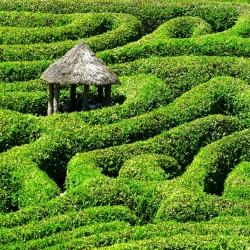 Every significant leap in technology has promised more than it has delivered. Or, perhaps more accurately, it has delivered something different from what was promised. When automation began infiltrating manufacturing in the 19th century, there was widespread fear that it would render human labour obsolete. Instead, it transformed the nature of work, creating new categories of jobs and even eradicating others. The digital revolution of the late 20th century followed a similar trajectory. It shifted the burden of tasks, spawned entirely new industries, and necessitated new skill sets.
Every significant leap in technology has promised more than it has delivered. Or, perhaps more accurately, it has delivered something different from what was promised. When automation began infiltrating manufacturing in the 19th century, there was widespread fear that it would render human labour obsolete. Instead, it transformed the nature of work, creating new categories of jobs and even eradicating others. The digital revolution of the late 20th century followed a similar trajectory. It shifted the burden of tasks, spawned entirely new industries, and necessitated new skill sets.
Now, as we stand on the precipice of yet another technological revolution, it’s important to consider these historical patterns to navigate the future. Generative AI, with its staggering potential to revolutionise creative workflows, is the latest disruptor in our modern world. It promises efficiency and innovation, but like past advancements, it also brings challenges that require careful navigation.
Efficiency meets complexity
Generative AI refers to systems that can generate text, images, or other media in ways that mimic human creativity. With minimal human input, these systems can rapidly produce high-quality content, from detailed illustrations to complex written narratives. For instance, a designer might use an AI tool to create a series of logo concepts in seconds, which traditionally takes days to complete.
On the surface, this seems like a remedy for creative industries and their workflows. After all, who wouldn’t want to speed up the tedious aspects of design and production? But if history teaches us anything, introducing new technologies can often lead to shifts in workload dynamics rather than outright reductions in work. Artificial intelligence doesn’t simply perform tasks more quickly; it alters the very nature of those tasks altogether.
Consider the evolution of graphic design. In the pre-digital era, designers could meticulously hand-draw every element. The introduction of digital software like Adobe Photoshop and Illustrator didn’t eliminate the need for designers; instead, it transformed their workflows as they knew it. These tools automate specific tasks, allowing designers to focus on more creative aspects of their projects. However, they also required designers to learn new skills and adapt to a rapidly changing landscape.
Today, agencies are exploring creative AI tools for agencies to streamline campaign development, automate repetitive design tasks, and enhance ideation processes. These tools serve not just as productivity boosters but as collaborative partners, enabling teams to produce high-volume, high-quality content without compromising on originality.
The importance of continuous day-to-day learning
Generative AI is poised to have a similar impact. While it can handle routine and repetitive tasks, it also introduces new complexities. Creatives – such as those in the video game industry – will need to learn how to harness AI’s capabilities effectively, integrating these tools into their workflows without compromising their unique artistic vision. This will necessitate continuous learning and adaptation as the technology evolves.
However, the promise of generative AI comes with a significant caveat. There’s a growing concern that AI could displace human workers in specific roles, particularly in areas where it can replicate particular skills. For example, an AI trained in an organisation’s in-house art style might reduce the need for a large team of traditional artists. This could lead to unemployment or the devaluation of specific skill sets, echoing the fears that accompanied earlier technological advancements.
Taking proactive steps for a balanced future
So, what can businesses do to mitigate these risks? One approach is to emphasise the unique value of human creativity, which AI cannot copy. While AI can generate content based on existing patterns, it cannot originate novel ideas or understand cultural or emotional nuances. As such, human creativity should be positioned as complementary to AI, focusing on leveraging both strengths.
In addition, there must also be an investment in education and training to equip workers with the skills needed to thrive in an AI-augmented landscape. This includes technical skills and the ability to think critically and creatively. By fostering an adaptable and resilient workforce, we can ensure that AI enhances human potential rather than diminishes it.
The impact of generative AI on creative workflows is profound and multifaceted. It promises unprecedented efficiency and innovation but also introduces challenges that echo those of past technological revolutions. By learning from history and taking proactive measures, we can navigate this new landscape in a way that maximises benefits while mitigating risks.
Chris Hewish is Chief Strategy Officer at Xsolla and CEO of Long Tale Games, is a trusted game executive who’s generated $2B+ revenue from over 60 releases with strategic leadership experience at video game powerhouse Activision, content factory DreamWorks, and fintech / gamtech pioneer Xsolla; among others. His ability to scale businesses, drive market-changing innovations, and secure high-profile deals makes him a highly sought after executive in the world of interactive entertainment.

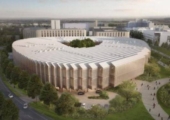
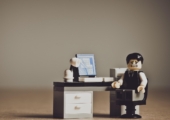
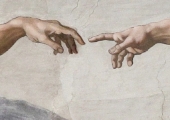


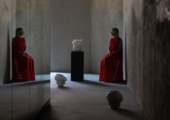







August 20, 2024
How generative AI is shaping a new landscape for creativity
by Chris Hewish • AI, Comment
Now, as we stand on the precipice of yet another technological revolution, it’s important to consider these historical patterns to navigate the future. Generative AI, with its staggering potential to revolutionise creative workflows, is the latest disruptor in our modern world. It promises efficiency and innovation, but like past advancements, it also brings challenges that require careful navigation.
Efficiency meets complexity
Generative AI refers to systems that can generate text, images, or other media in ways that mimic human creativity. With minimal human input, these systems can rapidly produce high-quality content, from detailed illustrations to complex written narratives. For instance, a designer might use an AI tool to create a series of logo concepts in seconds, which traditionally takes days to complete.
On the surface, this seems like a remedy for creative industries and their workflows. After all, who wouldn’t want to speed up the tedious aspects of design and production? But if history teaches us anything, introducing new technologies can often lead to shifts in workload dynamics rather than outright reductions in work. Artificial intelligence doesn’t simply perform tasks more quickly; it alters the very nature of those tasks altogether.
Consider the evolution of graphic design. In the pre-digital era, designers could meticulously hand-draw every element. The introduction of digital software like Adobe Photoshop and Illustrator didn’t eliminate the need for designers; instead, it transformed their workflows as they knew it. These tools automate specific tasks, allowing designers to focus on more creative aspects of their projects. However, they also required designers to learn new skills and adapt to a rapidly changing landscape.
Today, agencies are exploring creative AI tools for agencies to streamline campaign development, automate repetitive design tasks, and enhance ideation processes. These tools serve not just as productivity boosters but as collaborative partners, enabling teams to produce high-volume, high-quality content without compromising on originality.
The importance of continuous day-to-day learning
Generative AI is poised to have a similar impact. While it can handle routine and repetitive tasks, it also introduces new complexities. Creatives – such as those in the video game industry – will need to learn how to harness AI’s capabilities effectively, integrating these tools into their workflows without compromising their unique artistic vision. This will necessitate continuous learning and adaptation as the technology evolves.
However, the promise of generative AI comes with a significant caveat. There’s a growing concern that AI could displace human workers in specific roles, particularly in areas where it can replicate particular skills. For example, an AI trained in an organisation’s in-house art style might reduce the need for a large team of traditional artists. This could lead to unemployment or the devaluation of specific skill sets, echoing the fears that accompanied earlier technological advancements.
Taking proactive steps for a balanced future
So, what can businesses do to mitigate these risks? One approach is to emphasise the unique value of human creativity, which AI cannot copy. While AI can generate content based on existing patterns, it cannot originate novel ideas or understand cultural or emotional nuances. As such, human creativity should be positioned as complementary to AI, focusing on leveraging both strengths.
In addition, there must also be an investment in education and training to equip workers with the skills needed to thrive in an AI-augmented landscape. This includes technical skills and the ability to think critically and creatively. By fostering an adaptable and resilient workforce, we can ensure that AI enhances human potential rather than diminishes it.
The impact of generative AI on creative workflows is profound and multifaceted. It promises unprecedented efficiency and innovation but also introduces challenges that echo those of past technological revolutions. By learning from history and taking proactive measures, we can navigate this new landscape in a way that maximises benefits while mitigating risks.
Chris Hewish is Chief Strategy Officer at Xsolla and CEO of Long Tale Games, is a trusted game executive who’s generated $2B+ revenue from over 60 releases with strategic leadership experience at video game powerhouse Activision, content factory DreamWorks, and fintech / gamtech pioneer Xsolla; among others. His ability to scale businesses, drive market-changing innovations, and secure high-profile deals makes him a highly sought after executive in the world of interactive entertainment.